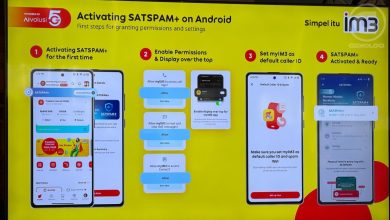The ExtraHop Cyber Risk and Readiness Benchmarking Report Highlight the Frequency and Dangers of Internet-Exposed Protocols on Organisational Networks

ExtraHop, the leader in cloud-native network intelligence, today released findings from the ExtraHop Benchmarking Cyber Risk and Readiness report showing that a significant percentage of organizations expose insecure or highly sensitive protocols, including SMB, SSH, and Telnet, to the public internet. Whether intentional or accidental, these exposures broaden the attack surface of any organization by providing cyberattackers an easy entry point into the network.
Since the Russian invasion of Ukraine, governments and security experts around the world have noticed a significant increase in cyberattack activity. The Cybersecurity and Infrastructure Security Agency (CISA) and other government agencies such as ENISA, CERT-EU, ACSC, and SingCERT have strongly encouraged enterprises to focus on strengthening their overall security postures, starting with reducing the likelihood of a damaging cyber intrusion. One key recommendation made by these agencies is that organizations disable all unnecessary or insecure ports and protocols.
In the new report, ExtraHop conducted an analysis of enterprise IT environments to benchmark the cybersecurity posture of organizations based on open ports and sensitive protocol exposure so that security and IT leaders can assess their risk posture and attack surface visibility relative to other organizations.
Key Findings
- SSH is the Most Exposed Sensitive Protocol: Secure Shell (SSH) is a well-designed protocol with good cryptography for securely accessing remote devices. It is also one of the most widely used protocols, making it a favorite target for cybercriminals looking to access and control devices across an enterprise. Sixty-four percent of organizations have at least one device exposing this protocol to the public internet.
- LDAP Exposure is High: Lightweight directory access protocol (LDAP) is a vendor-neutral application protocol that maintains distributed directory information in an organized, easy-to-query manner. Windows systems use LDAP to look up usernames in Active Directory. By default, these queries are transmitted in plaintext giving attackers an opportunity to discover usernames. With 41% of organizations having at least one device exposing LDAP to the public internet, this sensitive protocol has an outsized risk factor.
- Exposed Database Protocols Open Doors for Attacks: Database protocols enable users and software to interact with databases, inserting, updating, and retrieving information. When an exposed device is listening on a database protocol, it exposes the database as well. Twenty-four percent of organizations have at least one device exposing Tabular Data Stream (TDS) to the public internet. This Microsoft protocol for communicating with databases transmits data in plaintext, making it vulnerable to interception.
- File Server Protocols At Risk: In looking at the four protocol types (file server protocols, directory protocols, database protocols, and remote control protocols), the vast majority of cyberattacks occur in file server protocols, which involve attackers moving files from one place to another. Thirty-one percent of organizations have at least one device exposing Server Message Block (SMB) to the public internet.
- FTP is Not As Secure As it Can Be: File transfer protocol (FTP) is not a full-service file access protocol. It sends files over networks as a stream and offers practically no security. It transmits data, including usernames and passwords, in plaintext, which makes its data easy to intercept. While there are at least two secure alternatives, 36% of organizations expose at least one device using this protocol to the public internet.
- Protocol Usage Differs by Industry: This is indicative of different industries investing in different technologies and having different requirements for storing data and interacting with remote users. When considering all industries together, SMB was the most prevalent protocol exposed.
- In financial services, SMB is exposed in 28% of organizations.
- In healthcare, SMB is exposed in 51% of organizations.
- In manufacturing, SMB is exposed in 22% of organizations.
- In retail, SMB is exposed in 36% of organizations.
- In State and Local Government, SMB is exposed in 45% of organizations.
- In tech, SMB is exposed in 19% of organizations.
Organizations Continue to Leverage Telnet: Telnet, an old protocol for connecting to remote devices, has been deprecated since 2002. Yet 12% of organizations have at least one device exposing this protocol to the public internet. As a best practice, IT organizations should disable Telnet anywhere it is found on their network.
“Ports and protocols are essentially the doors and hallways that attackers use for exploring networks and causing damage,” said Jeff Costlow, CISO, ExtraHop. “That’s why knowing which protocols are running on your network and what vulnerabilities are associated with them is so important. This gives defenders the knowledge to make an informed decision about their risk tolerance and take actions — such as maintaining a continuous inventory of software and hardware in an environment, patching software quickly and continuously, and investing in tools for real-time insights and analysis — to improve their cybersecurity readiness.”
“The cascading effects of the Russia-Ukraine conflict on the cyber landscape further highlights the need for a more stringent cybersecurity posture across the globe, and Singapore is by no means an exception. Every organization wants their digital doors locked a little bit tighter than others and this report can help them assess where they fall on the scale of locked down to open. If organizations can understand what is running on their network and what vulnerabilities are associated with them, they’re going to have attack surface visibility and be able to make informed decisions about their risk,” said Daniel Chu, Vice President of Systems Engineering, APJ, ExtraHop.
To learn more about protocols and threat activities associated with them, visit the ExtraHop Network Protocol Glossary.
For more Shields Up resources, visit extrahop.com/resources/shields-up.




